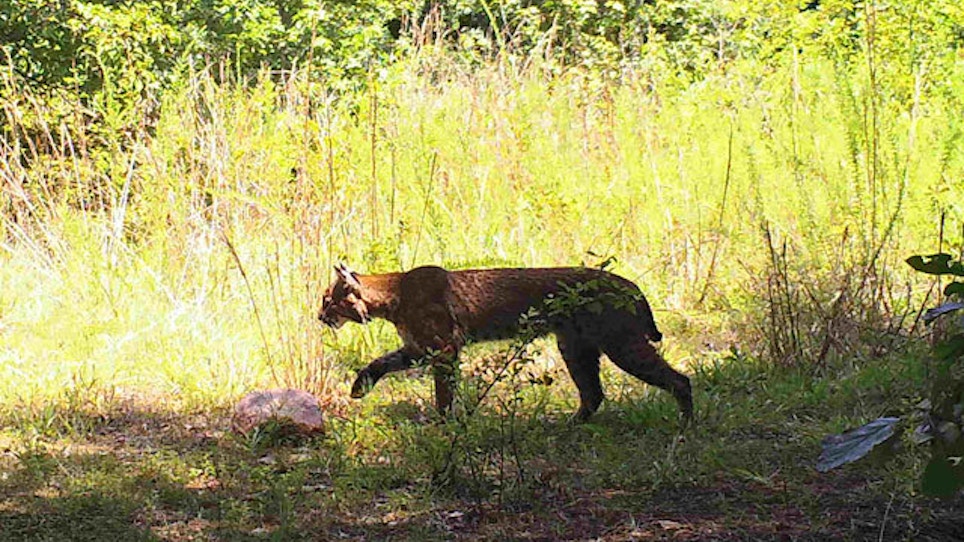By JIM SUHR | Associated Press
ST. LOUIS (AP) — Ken Staley spends days setting traps in pursuit of beavers, otters, raccoons and muskrats. Yet the southwestern Illinois man for years has craved the chance to catch a more exotic prey: bobcats.
“I'm not sure what an Illinois bobcat is worth, but a western one fetches a really nice price, upwards of $100-plus,” said Staley, who pursues trapping to supplement his window-coverings business in Millstadt, a village just southeast of St. Louis.
Soon, he may get his chance.
On the threatened species list for more than two decades until 1999, the nocturnal, pointy-eared cats have made enough of a comeback that Illinois lawmakers approved a measure this month allowing bobcat hunting in the state for the first time in more than 40 years.
The Illinois Department of Natural Resources supports the move, believing the state's bobcat population has rebounded to about 5,000 and that regulated hunting will help in long-term management of the species. While advocates say bobcats have become nuisances in some places, opponents question the science behind declaring them recovered and argue that bobcat hunting is all about trophies, not food.
Democratic Gov. Pat Quinn, who leaves office next month, must sign the bill for it to become law, though he has given no indication if he will support it. Spokesman Grant Klinzman said last week that he's still reviewing it. Under the state's Constitution, any bill not returned to the General Assembly by veto or isn't acted upon by the governor within 60 days after it reaches his or her desk automatically becomes law.
“The bobcat's recovery is a true conservation success story,” said Chris Young, an IDNR spokesman, noting department research that supports a hunting season. “Hunters play a valuable management role in regulating populations of many species of wildlife, including deer, turkeys, river otters and more.”
Opponents aren't buying the argument, contending the legislation lacks adequate controls to halt the hunting if the species again nears endangered status.
“I can't find any reason whatsoever for this hunting, other than trophy killing,” said State Sen. Linda Holmes, an Aurora Democrat, asking why the General Assembly could focus on the measure while failing to address more pressing matters for the state, including a serious budget gap.
The bobcat bill passed overwhelmingly in the House by a vote of 91-20. But the vote was closer in the Senate, 30-19, with a number of lawmakers choosing not to weigh in.
About twice the size of an average house cat, native Illinois bobcats stand about 2 feet tall and typically weigh 15 to 25 pounds. They have stubby “bobbed” tails 4 to 5 inches long and their prominent ears are marked by short blackish tufts.
They are believed to inhabit 17 of Illinois' 102 counties, mostly in the south and west where abundant woodlands and brushy, grassy tracts offer both food and cover. Across the U.S., it's estimated they number between 725,000 and 1 million, according to the Defenders of Wildlife conservationist group.
Under the measure, bobcats could be hunted between November and mid-February. Hunters would require a permit from the DNR and be limited to one bobcat per year. The DNR would decide where and how many permits would be issued. Young said licenses, stamps and other fees would pay for conservation efforts to help the animals recover.
State Sen. Sam McCann, a Carlinville Republican who sponsored the bill, called it “a proactive response” to the bobcat's recovery.
“It's very similar to deer hunting, all about population management. This just happens to be a tool in our tool chest,” he said.
But Kristen Strawbridge, Illinois state affairs director for the Humane Society, countered that it was “due to overhunting' that bobcats' survival was threatened in the first place.
“No one eats bobcat,” she said. “Instead, they are killed solely for their fur and trophies - depriving the general public of this iconic species and commercializing wildlife for the sole benefit of very few.”
___
Associated Press reporter Sara Burnett in Chicago contributed to this report.
___
The bill is HB4226.






